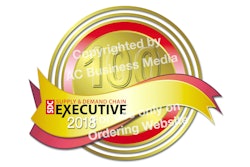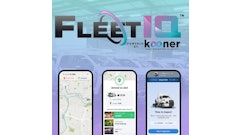
Millennials do everything on their mobile devices. They bank, shop, date, ride-share, reserve restaurants, do their finances, make travel reservations, review doctors, read news, watch sports, movies and TV shows, all while staying simultaneously and constantly connected to friends and family. Millennials are the new leaders of today, and their views on how business should use technology to interact with its customers is no longer a mere academic question. Millennials are now in charge of the buying decisions made by companies, and business trends must cater to the new paradigm or fail.
The generational shift has caused a technological shift, driving businesses to evolve. Connected, always one, mobile devices are now the express ticket for business to conduct commerce with its customers.
Making a Connection
Enterprise software can no longer be esoteric, complex and sit on an expensive hardware that only a few experts can truly understand how to interface with. Millennials demand that enterprise business software empower them to work the same way that tech has transformed the way they live their personal lives.
Enterprise software must “connect” their customers and not “sell” to their customers. Millennials don’t want to be sold to; they want to co-create products with companies. According to a poll conducted by Forbes, 42 percent of millennials surveyed said they are interested in helping companies develop future products and services. In our society, companies usually create products and hope that their target market will consume them. When it comes to millennials, they want to be more involved with how products get created. Companies that enable them to be part of the product development process will be more successful.
Once millennials sense any type of sales pitch, they are turned-off and move on to look for a different type of relationship. They desire a connection with what they want to purchase. For example. Uber does not sell a product, it connects users effortlessly with a demanded service. According to author Ian Altman, “We are in the connection economy. Uber is the largest taxi company, yet it has no physical assets and can still deliver rides easily to its customers.”
Technology Natives
Millennials have championed the concept of “Consumerized IT” and BYOD (Bring Your Own Device) dependency. Because Millennials are connected through their personal devices and self-trained on them, they demand to use their own personal devices on the job to access the apps needed for their work tasks at any time. This is the new reality.
Millennials live in a world of sharing real-time information and intelligence via social networks—they believe in collaboration. These same social networks influence buying decisions by providing relevant feedback about the use of nearly every product and service. KPIs and real-time analytics are expected, and the lack of the availability of this information is typically seen as a poor indicator. They demand collaborative platforms, up to the minute dashboards, and customized reports where they can discuss and share data insights.
Sometimes referred to as technology natives, millennials were born into a period of fast-changing technology, meaning they are comfortable with technology as a native appendage to their personage. Sharing is everything, and they don’t want to wait for information, rather they demand it at their fingertips. Faster, easier, better and mobile—that is the new normal.
Why should this matter to the enterprise software business? Because millennials demand the technology they use at work to perform just as well as the technology they use in their personal lives. This desire was driven by the massive digital retail consumerization trend, and it has raised the bar for business enterprise software organizations to pay close attention to the user experience of their systems and software. The new paradigm is here, and it is now.





















